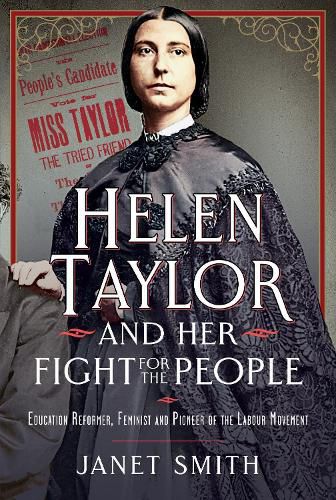Readings Newsletter
Become a Readings Member to make your shopping experience even easier.
Sign in or sign up for free!
You’re not far away from qualifying for FREE standard shipping within Australia
You’ve qualified for FREE standard shipping within Australia
The cart is loading…






Despite being hailed as 'the foremost woman of her time' in the 1880s, Helen Taylor's legacy has largely been overshadowed, often reduced to her role as John Stuart Mill's stepdaughter and a divisive figure within the Victorian women's suffrage movement. However, this biography seeks to rediscover the complex woman behind the often-deserved label of 'difficult to work with,' exploring the politics and convictions that made her both admired and reviled. As the daughter of philosopher Harriet Taylor and stepdaughter of Mill, Helen emerged from their shadows to become a powerful public figure, fighting for women's rights, education reform, land nationalization, socialism, and Irish Home Rule. In 1885, she became the first woman to run as a parliamentary candidate, representing Camberwell Radical Club. However, by the late 1880s, poor health forced her withdrawal from public life, and her contributions faded into obscurity. Helen's vital role in shaping progressive movements was lamented even in her time, with reformers like Frances Soutter lamenting her erasure from history. Helen Taylor and her Fight for the People reclaims Helen's rightful place as a pioneering force in the fight for democracy and gender equality in the Victorian era. AUTHOR: Janet Smith holds a PhD in Women's History and a M. A. (distinction) in Postcolonial Cultures from London Metropolitan University. She is a member of the Royal Historical Society and the National Coalition of Independent Scholars. Janet became interested in Helen Taylor during her Masters course when she read a brief reference to her in a book on the Irish Land War (1879-1882) as a well-to-do English woman who helped to build huts to shelter the evicted tenants. She searched for other literature on Taylor but found it sparce and mainly negative. Convinced there was more to this woman than someone who would argue with her own shadow, Janet decided to research her life for a PhD. Janet has published articles and chapters in academic journals and books on Taylor and on the philosophies underpinning the nineteenth century women's movement. 12 b/w illustrations
$9.00 standard shipping within Australia
FREE standard shipping within Australia for orders over $100.00
Express & International shipping calculated at checkout
Despite being hailed as 'the foremost woman of her time' in the 1880s, Helen Taylor's legacy has largely been overshadowed, often reduced to her role as John Stuart Mill's stepdaughter and a divisive figure within the Victorian women's suffrage movement. However, this biography seeks to rediscover the complex woman behind the often-deserved label of 'difficult to work with,' exploring the politics and convictions that made her both admired and reviled. As the daughter of philosopher Harriet Taylor and stepdaughter of Mill, Helen emerged from their shadows to become a powerful public figure, fighting for women's rights, education reform, land nationalization, socialism, and Irish Home Rule. In 1885, she became the first woman to run as a parliamentary candidate, representing Camberwell Radical Club. However, by the late 1880s, poor health forced her withdrawal from public life, and her contributions faded into obscurity. Helen's vital role in shaping progressive movements was lamented even in her time, with reformers like Frances Soutter lamenting her erasure from history. Helen Taylor and her Fight for the People reclaims Helen's rightful place as a pioneering force in the fight for democracy and gender equality in the Victorian era. AUTHOR: Janet Smith holds a PhD in Women's History and a M. A. (distinction) in Postcolonial Cultures from London Metropolitan University. She is a member of the Royal Historical Society and the National Coalition of Independent Scholars. Janet became interested in Helen Taylor during her Masters course when she read a brief reference to her in a book on the Irish Land War (1879-1882) as a well-to-do English woman who helped to build huts to shelter the evicted tenants. She searched for other literature on Taylor but found it sparce and mainly negative. Convinced there was more to this woman than someone who would argue with her own shadow, Janet decided to research her life for a PhD. Janet has published articles and chapters in academic journals and books on Taylor and on the philosophies underpinning the nineteenth century women's movement. 12 b/w illustrations